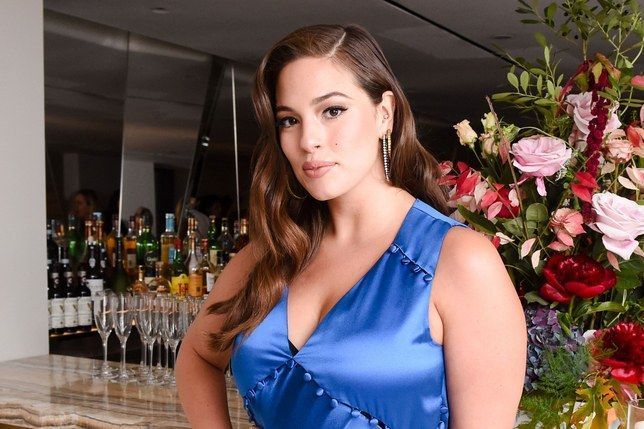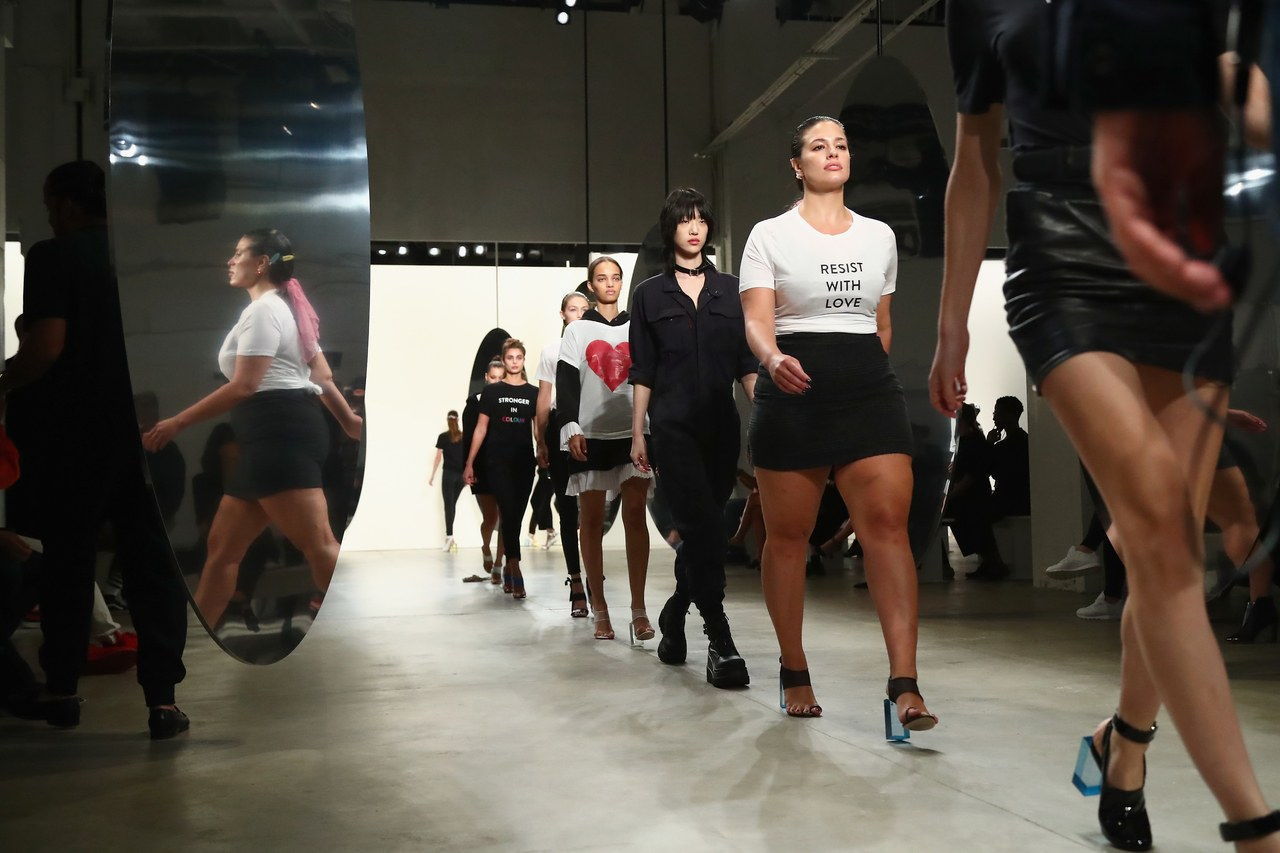Ashley Graham Opens Up About What Real Size Inclusivity Looks Like

September’s runways at New York Fashion Week were nothing short of historic: A record-shattering number of size-diverse looks—208, to be exact—appeared on the runways of some of fashion’s most notable brands. While those model appearances marked a major shift in what designers consider a runway-worthy body, model Ashley Graham tells Glamour that there’s still plenty of work to be done to reach genuine size inclusivity in the fashion industry.
Earlier this month at the Glamour Women of the Year kickoff party with Barneys New York, Graham cited “seeing curves on the runway” as one of the most fundamental shifts in the fashion industry of 2017. “To me, that’s like, whoa. Major round of applause.” This year she was the first-ever plus model to walk for Michael Kors (and she did so both for fall 2017 and spring 2018!), and to cover an issue of Vogue (another moment she rightfully considers major.) “We shouldn’t be surprised [by size inclusivity] anymore—we should just be celebrating it and being like, ‘OK, what’s the next thing? Where else are we gonna see us?'”
To Graham, size inclusivity isn’t casting a single curve model in a show flooded with sample-size models and calling it progress, which we’ve seen on past runways and in ad campaigns aplenty. She recalls having conversations with designers who want to put curves on the runway but fear it might feel like tokenism. The key to making it an honest, authentic effort? “[It’s] when there’s not just one [curve model but] there’s multiple,” Graham says, “and you bring ’em back.”

Ashley Graham walking in the Prabal Gurung spring 2018 fashion show during New York Fashion Week
“I think if designers start thinking that way,” of incorporating size diversity into their runways and presentations organically, “then that’s how the change really happens,” Graham explains. “And that’s where you see the movement really not being a movement, but being really normal.” A few people have been living up to those terms, she says—Christian Siriano, Prabal Gurung, and Michael Kors, in particular.
Graham also highlights how retailers like Nordstrom are introducing new store concepts whereby all sizes, from petite to plus, are merchandised together as another important development in size inclusivity, and one that’s worth keeping an eye on. In addition to simply having all the product in the same section, “I think that buyers need to start educating their customer and saying like, ‘Hey, you know what? Prabal does go up to a size 22, Brandon Maxwell does go up to a size 22, would you buy it if we had it in the store?’ Because I think women who are above a size 14 don’t know that major designers actually have their size.”
As we look to 2018, Graham is hoping we not only continue to build on the momentum from this year but also start innovating and pushing beauty standards for plus-size models. “I think that in the curvy world, what you see when you see a model is an hourglass, flat stomach, cute face…. and I think that [we should be] looking beyond a body, looking beyond a face, looking at what a woman is actually doing, and how she’s changing the world around her. That’s what, to me, a supermodel is in 2018.”
Ashley Graham Becomes First Curve Model to Appear in Mario Testino’s ‘Towel Series’
This Is How We Get More Plus-Size Models on the Runway

